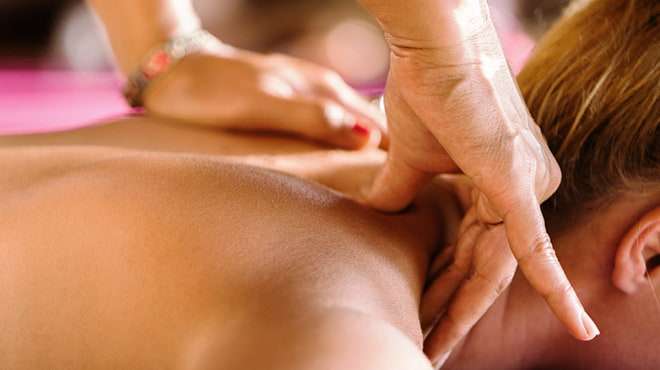Yoga: Fight stress and find serenity
Is yoga right for you? It is if you want to fight stress, get fit and stay healthy.
By Mayo Clinic Staff
Your mobile phone is ringing. Your boss wants to talk to you. And your partner wants to know what’s for dinner. Stress and anxiety are everywhere. If they’re getting the best of you, you might want to hit the mat and give yoga a try.
Yoga is a mind-body practice that combines physical poses, controlled breathing, and meditation or relaxation. Yoga may help reduce stress, lower blood pressure and lower your heart rate. And almost anyone can do it.
Understanding yoga
Multimedia

Yoga pose
Yoga is considered one of many types of complementary and integrative medicine approaches. Yoga brings together physical and mental disciplines that may help you achieve peacefulness of body and mind. This can help you relax and manage stress and anxiety.
Yoga has many styles, forms and intensities. Hatha yoga, in particular, may be a good choice for stress management. Hatha is one of the most common styles of yoga, and beginners may like its slower pace and easier movements. But most people can benefit from any style of yoga — it’s all about your personal preferences.
The core components of hatha yoga and most general yoga classes are:
- Poses. Yoga poses, also called postures, are a series of movements designed to increase strength and flexibility. Poses range from simple to difficult. In a simple post, you might lie on the floor while completely relaxed. A difficult posture may have you stretching your physical limits.
- Breathing. Controlling your breathing is an important part of yoga. Yoga teaches that controlling your breathing can help you control your body and quiet your mind.
- Meditation or relaxation. In yoga, you may incorporate meditation or relaxation. Meditation may help you learn to be more mindful and aware of the present moment without judgment.
The health benefits of yoga
The potential health benefits of yoga include:
- Stress reduction. A number of studies have shown that yoga may help reduce stress and anxiety. Yoga can enhance your mood and overall sense of well-being. Yoga might also help you manage your symptoms of depression and anxiety that are due to difficult situations.
- Improved fitness. Practicing yoga may lead to improved balance, flexibility, range of motion and strength.
- Management of chronic conditions. Yoga can help reduce risk factors for chronic diseases, such as heart disease and high blood pressure. Yoga may also help manage low back pain, neck pain and menopause symptoms. Yoga might also help relieve symptoms of several chronic conditions, such as pain, chronic obstructive pulmonary disease (COPD), asthma, arthritis and insomnia.
Yoga precautions
Yoga is generally considered safe for most healthy people when practiced under the guidance of a trained instructor. But there are some situations in which yoga might pose a risk.
See your doctor before you begin yoga if any of the following apply to you:
- A herniated disk
- A risk of blood clots
- Eye conditions, including glaucoma
- Pregnancy — although yoga is generally safe during pregnancy, certain poses should be avoided
- Severe balance problems
- Severe osteoporosis
- Uncontrolled blood pressure
You may be able to practice yoga in these situations if you take precautions, such as avoiding certain poses or stretches. If you develop symptoms, such as pain, or have concerns, see your doctor to make sure you’re getting benefit and not harm from yoga.
Getting started
Although you can learn yoga from books and videos, beginners usually find it helpful to learn with an instructor. Classes also offer camaraderie and friendship, which are also important to overall well-being.
When you find a class that sounds interesting, talk with the instructor so that you know what to expect. Questions to ask include:
- What are the instructor’s qualifications? Where did he or she train and how long has he or she been teaching?
- Does the instructor have experience working with students with your needs or health concerns? If you have a sore knee or an aching shoulder, can the instructor help you find poses that won’t aggravate your condition?
- How demanding is the class? Is it suitable for beginners? Will it be easy enough to follow along if it’s your first time?
- What can you expect from the class? Is it aimed at your needs, such as stress management or relaxation, or is it geared toward people who want to reap other benefits?
Achieving the right balance
Every person has a different body with different abilities. You may need to modify yoga postures based on your individual abilities. Your instructor may be able to suggest modified poses. Choosing an instructor who is experienced and who understands your needs is important to safely and effectively practice yoga.
Regardless of which type of yoga you practice, you don’t have to do every pose. If a pose is uncomfortable or you can’t hold it as long as the instructor requests, don’t do it. Good instructors will understand and encourage you to explore — but not exceed — your personal limits.
There is a problem with information submitted for this request. Review/update the information highlighted below and resubmit the form.
From Mayo Clinic to your inbox
Sign up for free, and stay up to date on research advancements, health tips and current health topics, like COVID-19, plus expertise on managing health.
ErrorEmail field is required
ErrorInclude a valid email address
To provide you with the most relevant and helpful information, and understand which information is beneficial, we may combine your email and website usage information with other information we have about you. If you are a Mayo Clinic patient, this could include protected health information. If we combine this information with your protected health information, we will treat all of that information as protected health information and will only use or disclose that information as set forth in our notice of privacy practices. You may opt-out of email communications at any time by clicking on the unsubscribe link in the e-mail.
Thank you for subscribing!
You’ll soon start receiving the latest Mayo Clinic health information you requested in your inbox.
Sorry something went wrong with your subscription
Please, try again in a couple of minutes
- Yoga: What you need to know. National Center for Complementary and Integrative Health. https://www.nccih.nih.gov/health/yoga-what-you-need-to-know. Accessed Dec. 10, 2020.
- AskMayoExpert. Yoga. Mayo Clinic; 2019.
- Selectively and using a yoga program. American College of Sports Medicine. https://www.acsm.org/read-research/resource-library. Dec. 10, 2020.
- 6 things to know when selecting a complementary health practitioner. National Center for Complementary and Integrative Health. https://www.nccih.nih.gov/health/tips/things-to-know-when-selecting-a-complementary-health-practitioner. Accessed Dec. 10, 2020.
- Goldman L, et al., eds. Complementary, alternative, and integrative medicine. In: Goldman-Cecil Medicine. 26th ed. Elsevier; 2020. https://www.clinicalkey.com. Accessed Dec. 10, 2020.
- Yoga for health (eBook). National Center for Complementary and Integrative Health. https://www.nccih.nih.gov/health-info/yoga-for-health-ebook. Accessed Dec. 10, 2020.
See more In-depth
Yoga continues to grow in popularity as people experience its physical and mental benefits. Developing a personal yoga practice can help prevent and reduce stress, which is a common goal among people who want to create positive growth and focus on self-improvement.
In addition to physical postures, your yoga routine can include breathing, meditation, and relaxation techniques like yoga nidra. Continue reading to learn more about the stress-relieving benefits of yoga and how you can use your practice to enhance your well-being.

Share on Pinterest
Danil Nevsky/Stocksy United
How does yoga help alleviate stress and anxiety?
Yoga encourages mental and physical relaxation, which helps reduce stress and anxiety. The physical postures promote flexibility, relieve tension, and alleviate pain.
Yoga poses may help you release physical blockages like muscle knots, helping release emotions and tension. They also promote the release of mood-boosting endorphins, which are the feel-good hormones that can positively affect how you handle stress.
Focusing on the present moment during your yoga practice enhances your awareness, boosts your concentration, and centers your mind.
As you become aware of the transitory nature of your bodily sensations, thoughts, and feelings, you may find it easier to let go of attachments to positive, negative, and neutral experiences. You may also learn to cultivate feelings such as love, joy, and serenity.
What does the research say about yoga for stress?
Plenty of scientific evidence supports the stress-relieving benefits of yoga.
According to a 2018 study, yoga had a positive result on women who practiced Hatha yoga 3 times a week for 4 weeks. After 12 sessions, they experienced significant reductions in stress, depression, and anxiety (1).
These results suggest that yoga can be a complementary medicine and may decrease the need for prescription drugs. More in-depth studies are required to investigate the long-term role of yoga in treating stress, depression, and anxiety.
A small 2020 study in adult men suggested that yoga stretches reduce cortisol levels and have a positive effect on parasympathetic nerve activity, which encourages relaxation (2).
Researchers in another 2020 study found that people who did an 11-minute yoga nidra meditation for 30 days reduced their stress levels, enhanced their overall well-being, and improved their sleep quality (3).
Practicing yoga nidra also boosted mindfulness and reduced negative emotions. These benefits stayed the same at a follow-up 6 weeks later.
Yoga poses for stress relief
You can get started with the following yoga poses to relieve stress.
Cat-Cow Pose (Marjaryasana to Bitilasana)
This pose allows you to connect your breath to your movements as you calm your mind and release stress. Allow your breath to guide each movement.
- Begin in a tabletop position.
- Place your wrists underneath your shoulders and your knees underneath your hips.
- As you inhale, turn your gaze toward the ceiling and allow your belly to move toward your mat, arching your back. This is Cow Pose.
- As you exhale, draw your chin in toward your chest and bend your spine toward the ceiling, like a cat.
- Continue to flow between these two positions for 1 minute.
Share on Pinterest
Share on Pinterest
Child’s Pose (Balasana)
Child’s pose helps create an inward focus and restore energy. It also supports mental and physical relaxation.
For more support, place a cushion under your forehead, torso, or thighs.
- From a kneeling position, place your knees together or slightly apart.
- Sit back on your heels.
- Hinge at your hips as you fold forward, resting your forehead on your mat.
- Extend your arms in front of you or alongside your legs.
- Allow your torso to sink into your thighs.
- Breathe deeply and focus on relaxing your body.
- Hold this pose for up to 5 minutes.
Share on Pinterest
Legs-Up-the-Wall Pose (Viparita Karani)
Legs-Up-the-Wall Pose provides deep relaxation while boosting lymph flow and circulation.
- Sit on the floor facing the wall, with your body as close to the wall as possible.
- Lie on your back and place your legs up the wall with straight knees.
- Position your hips next to the wall or a few inches away.
- Place your arms alongside your body, or place one hand on your belly and one hand on your chest.
- Hold this pose for up to 15 minutes.
Share on Pinterest
Corpse Pose (Savasana)
During this pose, focus on breathing deeply as you calm your mind and let go of tension.
- Lie flat on your back with your feet slightly wider than your hips.
- Allow your toes to splay out to the sides.
- Position your arms next to your body at a 45-degree angle.
- Align your head, neck, and shoulders with your spine.
- Breathe deeply as you allow your body to fully relax.
- Stay in this pose for 10–20 minutes.
Share on Pinterest
Yoga meditation for stress relief
You can practice meditation on its own or include it as part of your asana routine. Meditation positions include sitting on a chair or on the floor. You can also do standing, walking, and lying-down meditation.
Experiment with a few types of meditation on your own or seek the guidance of a teacher who can help you create a structured, consistent routine. Once you’ve established a meditation practice, stick to this routine for some time instead of changing regularly.
Yoga nidra, known as yogic sleep, is a guided meditation that you do in-person with a teacher or via a recording. It promotes deep relaxation, alleviates stress, and helps you sleep better.
Yoga nidra is a fantastic option when you’re too tired for an asana (moving through poses) or seated meditation practice but still want to dedicate time to your yoga routine.
Tips when using yoga for stress relief
Yoga can be very effective when trying to calm your body and mind. To get the most out of your stress relief, remember these tips.
Release negativity during your yoga practice
Negative thoughts are bound to arise when you do yoga. You can practice awareness, acceptance, and detachment to create positive mental patterns. This may help you have fewer negative thoughts and be less affected by them.
Learn to focus on the present moment and bring your attention to your thoughts as they arise and pass, which helps you recognize their fleeting nature.
Each time you find yourself getting lost in your thoughts — whether they’re positive or negative — bring your awareness back to your breath and body. Over time, you can make it a habit to detach from both positive and negative states of mind.
Employ stress relief techniques off the mat
To manage stress off the mat, take a look at your schedule and lifestyle to see where you can make changes. This may include allowing yourself more free time, developing a healthy eating plan, or spending more time in nature.
While yoga can provide tremendous benefits, it’s important to remember that you will still experience the ups and downs of life. It’s natural to experience a wide range of feelings and emotions.
If you find your yoga practice creates more stress in your life, talk to an instructor who can help you develop a routine tailored to your needs. And, as always, talk to your doctor before starting any yoga routine, especially if you have any health conditions or take medications.
The bottom line
Yoga, meditation, and breathing exercises are wonderful ways to reduce stress, replenish your energy, and enhance your overall well-being. Enjoy the process of discovering which techniques and practices bring you the greatest benefit.




